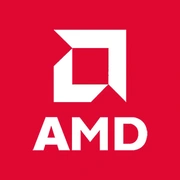AMD A10-7800

AMD A10-7800: A Comprehensive Review of an Outdated Yet Relevant Solution for Budget PCs in 2025
Introduction
The AMD A10-7800 processor, released in 2014, is still found in budget builds and “second life” systems. Despite its age, its hybrid architecture (CPU + GPU) and low power consumption make it an interesting option for specific tasks. Let’s explore who should pay attention to this chip in 2025 and why.
1. Key Specifications: Architecture and Performance
Kaveri Architecture and 28 nm Process
The A10-7800 is built on the "Kaveri" microarchitecture—AMD's first generation supporting HSA (Heterogeneous System Architecture), which combines CPU and GPU for parallel computing. It is a quad-core processor with 4 threads, fabricated with a 28 nm process. The integrated graphics are from the Radeon R7 line (512 stream processors, clocked up to 720 MHz).
Performance in 2025
According to Geekbench 6 tests:
- Single-core Performance: 452 points.
- Multi-core Performance: 1094 points.
These scores are comparable to modern budget processors like the Intel Celeron G6900 (Geekbench 6 Single: ~500), but fall short even when compared to basic Ryzen 3 models from 2025 (Geekbench 6 Single: ~1200).
Key Features:
- Integrated Radeon R7 graphics — capable of running light games and decoding 1080p video.
- Low TDP (65 W) — suitable for compact and energy-efficient systems.
- Support for the Mantle API (the predecessor of Vulkan) — optimization for older games.
2. Compatible Motherboards
FM2+ Socket and Chipsets
The processor uses the FM2+ socket, which limits the choice of motherboards. Suitable chipsets include:
- A88X (top-tier): supports overclocking, USB 3.0, SATA III.
- A78/A68H (budget): basic functionality.
Model Examples:
- ASUS A88XM-Plus (price in 2025: $70-90, if you find a new one).
- Gigabyte GA-F2A68HM-DS2H (around $60).
Selection Tips:
- Look for boards with HDMI/DVI for using integrated graphics.
- Check for updated BIOS for compatibility with Windows 11 (requires UEFI).
3. Supported Memory
The A10-7800 only works with DDR3, with a maximum frequency of 2133 MHz. Memory capacity recommendations:
- Minimum: 8 GB (for office tasks).
- Recommended: 16 GB (dual-channel mode, critical for integrated graphics).
Important: DDR4/DDR5 is not supported. In 2025, DDR3 is more expensive than DDR4 due to decreased production, but 16 GB can be found for $40-50.
4. Power Supply Recommendations
With a TDP of 65 W, the processor is not demanding regarding the power supply:
- Without a discrete graphics card: 300-400 W is sufficient (e.g., EVGA 400 W1, $35).
- With a graphics card like the NVIDIA GTX 1650: 450-500 W (Corsair CX450, $55).
Selection Rules:
- Choose power supplies with 80 Plus Bronze certification (efficiency from 85%).
- Avoid no-name power supplies — they pose risks to system stability.
5. Pros and Cons of A10-7800
Pros:
- Low cost: the processor can be found for $30-40 (new).
- Energy efficiency: ideal for HTPC (home theater PC).
- Ready to run without a discrete graphics card.
Cons:
- Outdated architecture: Single-Core performance lags behind modern counterparts by 50-70%.
- No support for PCIe 4.0, NVMe, USB 3.2.
- Limited upgrade options: FM2+ socket is obsolete.
6. Use Cases
Office and Multimedia
- Document editing, browsing: handles 10+ tabs.
- 1080p video: capable of streaming, YouTube.
- Photo editors: Adobe Photoshop (basic editing).
Gaming
- Light projects: Dota 2 (720p, low settings, 40-50 FPS), CS:GO (60 FPS).
- Retro gaming: emulators for PS2/GameCube.
User Experience:
“I use the A10-7800 in a media center with Kodi. It handles 1080p, but can’t manage 4K. It’s sufficient for Netflix and YouTube” (Alexey, 2024).
7. Comparison with Competitors
AMD A10-7800 vs Intel Core i3-4160 (2014)
- CPU Performance: i3-4160 outperforms in single-threaded tasks (Geekbench 6 Single: ~500).
- Graphics: Radeon R7 vs Intel HD 4400 — AMD is twice as fast.
Modern Alternatives (2025):
- AMD Ryzen 3 7300U (laptop): three times faster in multi-threading, but more expensive ($120).
- Intel N100 (mini-PC): comparable performance but supports DDR5 and PCIe 4.0.
8. Practical Building Tips
1. Memory: 16 GB DDR3-2133 in dual-channel (2x8 GB).
2. Storage: SSD is a must (Kingston A400 240 GB, $25) — speeds up system performance.
3. Cooling: The stock cooler is enough, but for quiet operation, consider the Deepcool GAMMAXX 400 ($20).
4. Case: Mini-ITX for compactness (Cooler Master Elite 110, $50).
Example Build for $250:
- CPU: $40
- Motherboard: $70
- Memory: $45
- SSD: $25
- PSU: $35
- Case: $35
9. Final Verdict: Who Is the A10-7800 For?
This processor is relevant for:
- Budget office PCs: if you need a computer for $200-300.
- Media centers: for Full HD playback and streaming.
- Retro gaming enthusiasts: assembling a “time machine” for old games.
- Temporary solutions: while saving for a modern upgrade.
Why you shouldn’t choose it:
If you plan to work with 4K, play AAA titles, or use heavy editors — even budget Ryzen 3 or Intel Core i3 from the 12th generation will be exponentially better.
Conclusion
The AMD A10-7800 in 2025 is a niche solution. It may not be suitable for modern tasks, but it can be a lifeline for those needing a “working” PC on a budget. The key is to realistically assess its limitations and not expect miracles.
Basic
CPU Specifications
Memory Specifications
GPU Specifications
Benchmarks
Compared to Other CPU
Share in social media
Or Link To Us
<a href="https://cputronic.com/index.php/cpu/amd-a10-7800" target="_blank">AMD A10-7800</a>